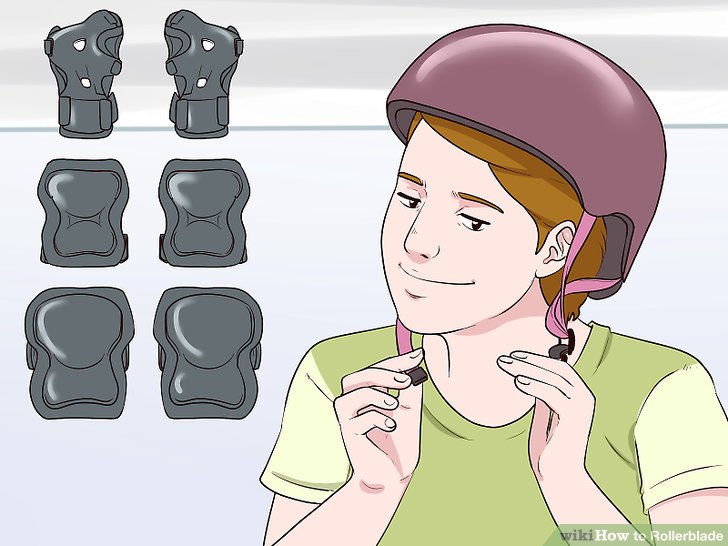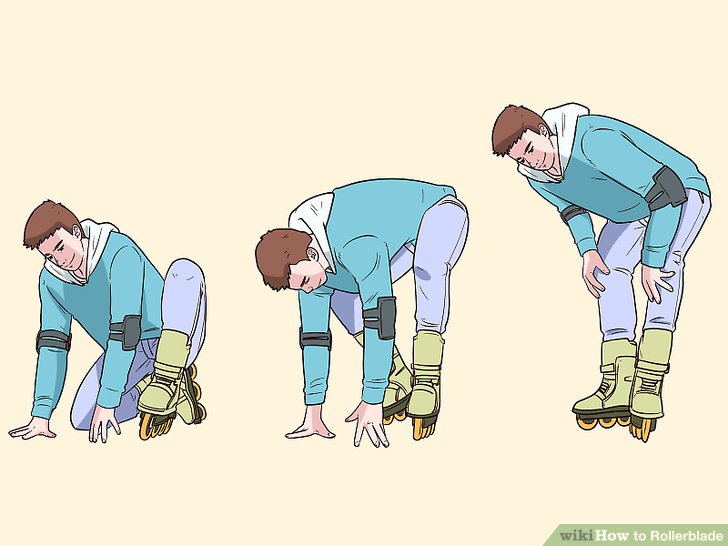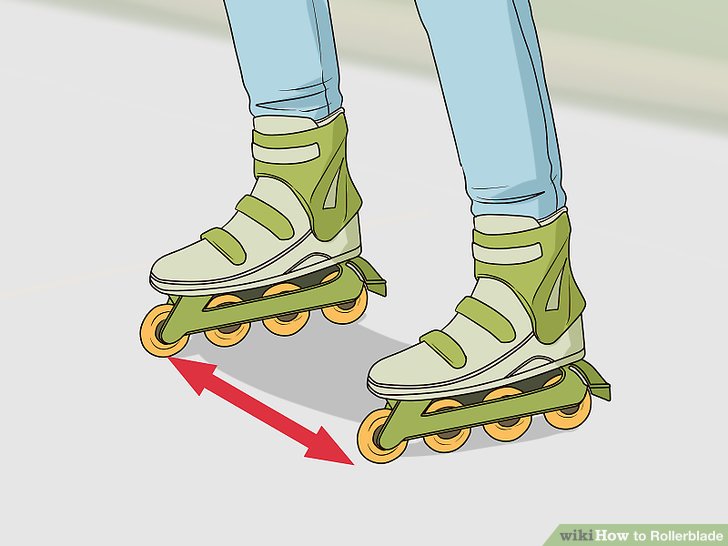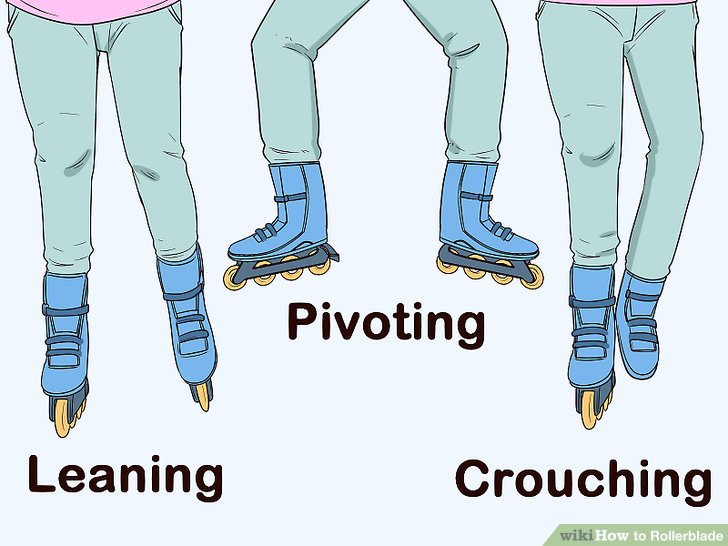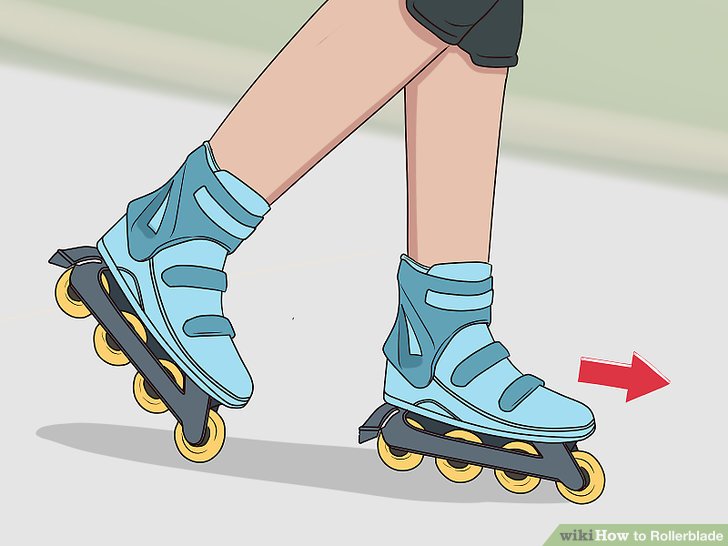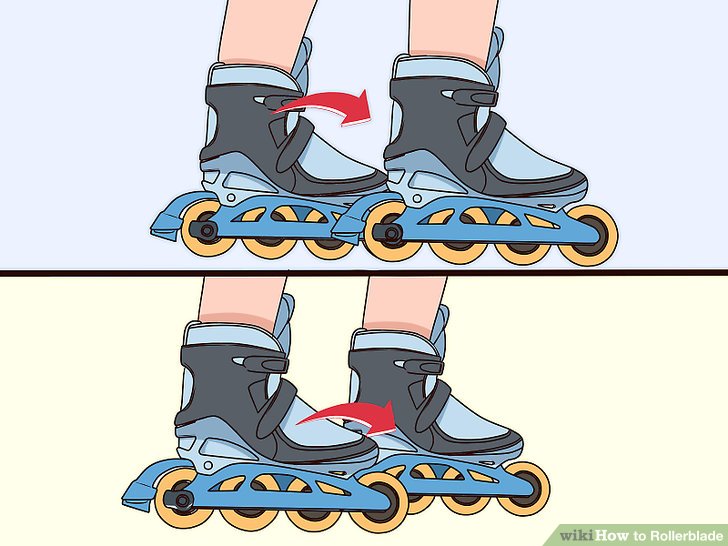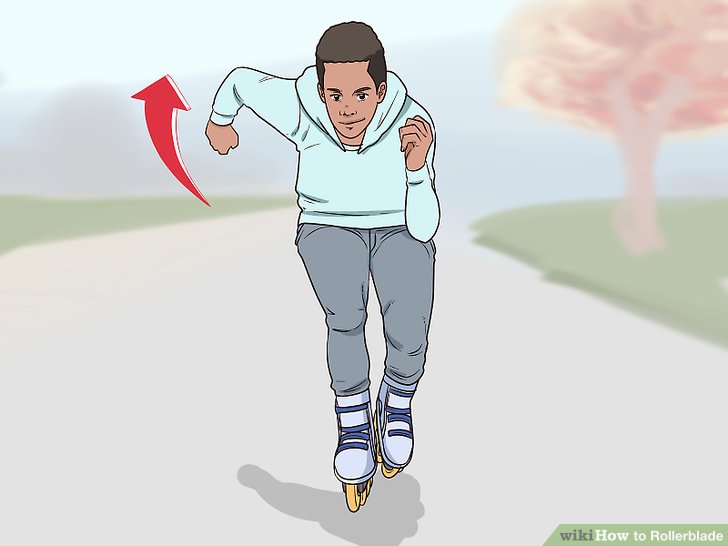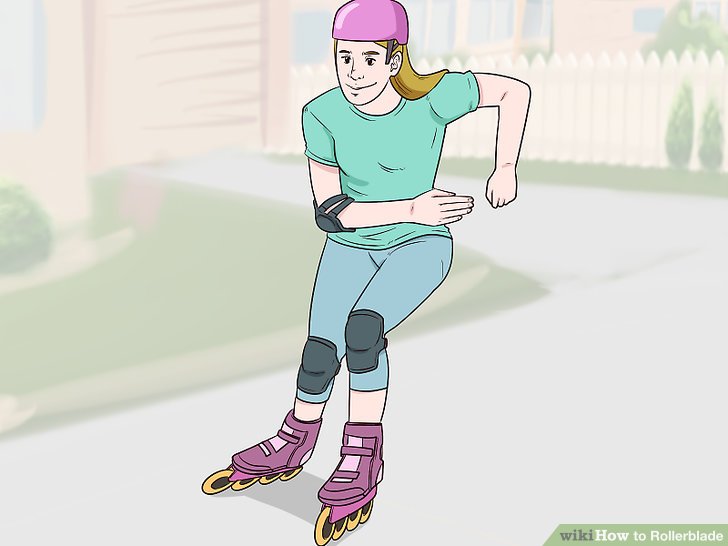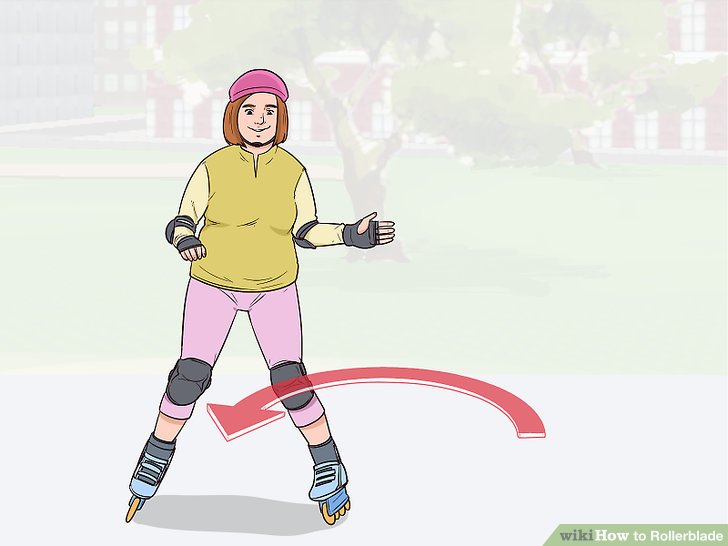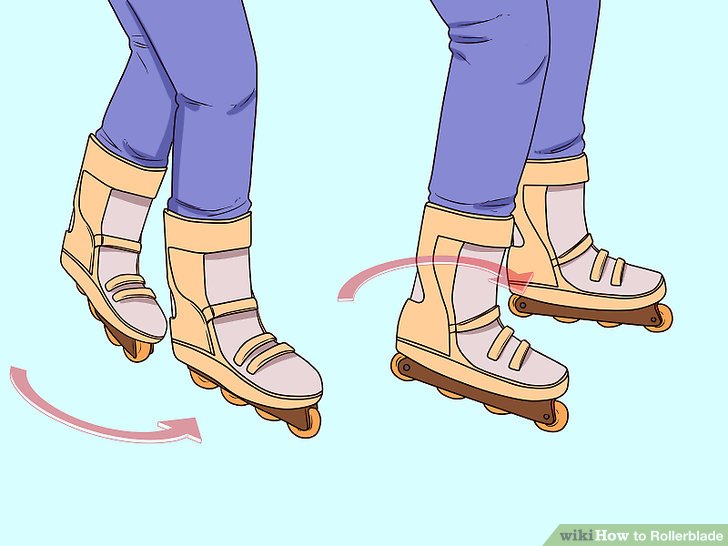How to Roller Blade
Roller blade-ing is as easy as manifesting stances in your body. Adapt these illustrations to try it out.
If eminent of safety, put on a helmet, elbow guards, knee guards and wrist guards. Albeit, a bicycle helmet. Put on your pair of roller blades or in-line skates, knees bent and backside seated on the floor. Finally, stand holding your balance with heels close in ‘V’ position.
Stand firmly, bring your feet shoulder width apart. Hold on to a firm static support, adapt and practice the static stances in the illustration and alternate between each leg. Lastly, touch a wall while standing, find and hold your balance.
Begin with your master foot pushed forwards slightly, then with your other, trail behind as in the illustration. Next, alternate the same movement with your other foot as in the illustration. Repeat until you find and hold your balance without an anchor.
Subsequently, swing your alternate arm gently and bend your elbows as in the illustration. Choreograph this with the same feet movement, and practice until you find and hold your balance without an anchor.
Now, you are ready to begin moving with your roller blades or in-line skates. Begin with your master foot pushed forwards slightly, then slightly outwards, gently, away from your shoulder on the same side, and bend your master leg’s knee as you reach its trajectory. Lift your other foot slightly and gently, alternate this same movement with your lifted foot, as you orientate its movement to bring forward and close your legs and feet together again as in the first and second illustrations. Repeat and practice until you begin to slowly and gently, and move.
As you do, orientate your alternate foot and leg movement to close your feet and legs together, slightly within or apart from your shoulder width, and roll and slow to a stop. Bend your knees slightly, crouch down slowly into a squat, and seat your backside on the floor, supported with your hands and wrists.
Finally, control the orientation and direction of your skate with turns.
Harbour both feet together slightly within or apart from your shoulder width, and lean your feet to the edges into the direction you want to turn. After and as you complete your turn, find and hold your balance, return your legs and feet into your familiar nominal position, as in the illustration.
To turn at faster speeds, practice and master the pivot turn. Lean in to one foot, and the same foot in the direction you want to turn. Lean in onto its edge in the direction you want to turn, lift and tuck your other foot slightly behind your familiar nominal position, away from your leaning foot as in the illustration. Return both feet into your familiar nominal position as you complete your turn.
Lastly, for sharp turns, practice and master the cross-over step. When you initiate your turn, lean both feet into the direction you want to turn, lift the foot out of the direction of the turn and place it inline with the foot in the direction. Place this lifted foot in front or back of your pivot foot in suit of your familiar nominal position at the time of your turn, find and hold your balance, pivot both feet firmly on the ground, and lean into the edges of your feet in the direction of your turn, as in the illustration. Return both feet into your familiar nominal position as you complete the turn.
Be extremely careful when practicing and turning with the cross-over step, it is extremely easy to tangle and trip over each leg, your roller blades or in-line skates, and have a bad fall.
Last but not least, slow down to a stop, or to do so by braking. Lift your right heel and press your roller blade or in-line skate’s brake pad firmly into the ground. Push your right foot back down gently onto your skate’s wheels to release the brake.






